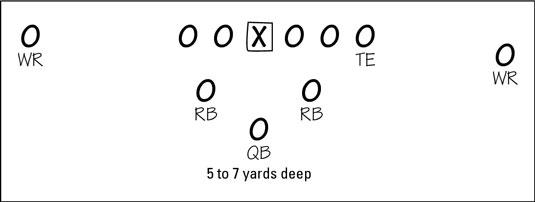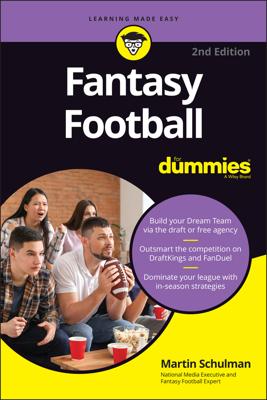In an American football pass play, the offense throws the ball, rather than running with it. A team uses specific types of pass offenses, depending on the situation. These pass formations are used throughout football. Here are two specialized offenses:
West Coast offense: The West Coast offense uses all the offense’s personnel in the passing game. The wide receivers run quick slants or square-out patterns toward the sidelines, hoping to receive the ball quickly and gain extra yards after the catch. The receivers run a lot of crossing routes, meaning they run from left to right or right to left in front of the quarterback, maybe 10 yards away. Crossing routes are effective because they disrupt many defensive secondary coverages.
If a running back is good at catching the ball, he becomes a prime receiver in the West Coast offense. Also, the West Coast offense incorporates the tight end into most pass plays, so that player must be an above-average receiver.
The premise of the West Coast offense is to maintain possession of the ball. Although it has quick-strike scoring possibilities, it’s designed to keep offensive drives alive by passing rather than running the ball. One of the basic theories of this offense is as follows: If the defense is suspecting a run, pass the ball to the running back instead.
Shotgun offense: For obvious passing downs, some teams use the shotgun offense. In the shotgun, the quarterback (QB) lines up 5 to 7 yards behind the center and receives a long snap.

Offenses use the shotgun to allow the quarterback more time to visualize the defense, particularly the secondary’s alignment. On an obvious passing down, nothing can be gained by keeping the quarterback under center (or directly behind the center). Why have him spend time dropping back to pass when he can receive a long snap and be ready to throw?
To run this offense, you want a quarterback who’s quick with his decisions and also able to run with the football if the defense’s actions make it possible for him to gain yardage by carrying the ball himself.
Recent years have seen three new offensive formations that make use of the shotgun-style offense:
The wildcat: The wildcat formation is unique in football because, when an offense runs the wildcat, the quarterback isn’t on the field. His place is taken by a running back or sometimes a wide receiver, who takes the snap shotgun-style from 5 to 7 yards behind the center. The running back or receiver then runs the ball (or sometimes hands it to another running back).
The wildcat offers a few advantages to the offense:
Without a quarterback on the field, the offense has an extra blocker to help the runner advance the ball.
Because the halfback takes the snap from center, the offense wastes no time handing off the ball. The runner can make his move as soon as the ball is snapped.
By starting from 5 to 7 yards behind the offensive line, the runner has a good field of vision. He can better see where the defenders are and where his offensive line has busted a hole in the defense for him to run through.
The spread: The offense spreads out across the width of the field, causing the defensive players to spread out accordingly. The quarterback takes the snap shotgun-style, after which he can run the ball, pass it, or hand it off, often to a runner who’s going in motion across the backfield. The idea behind the spread is to open up the field and create more offensive opportunities — more seams for runners to attack and more space in which receivers can get open.
The pistol: Run from a shotgun snap. The quarterback lines up 4 yards behind center, and a running back lines up 3 yards behind the quarterback.
Lining up 4 yards behind center gives the quarterback a better view of the defense and allows him the opportunity to throw quick passes without having to drop back before passing the ball. The running back, meanwhile, also gets a good look at the defense, because he’s even farther behind the line of scrimmage than the quarterback. Like the spread, the pistol requires a quarterback who can run as well as pass.

